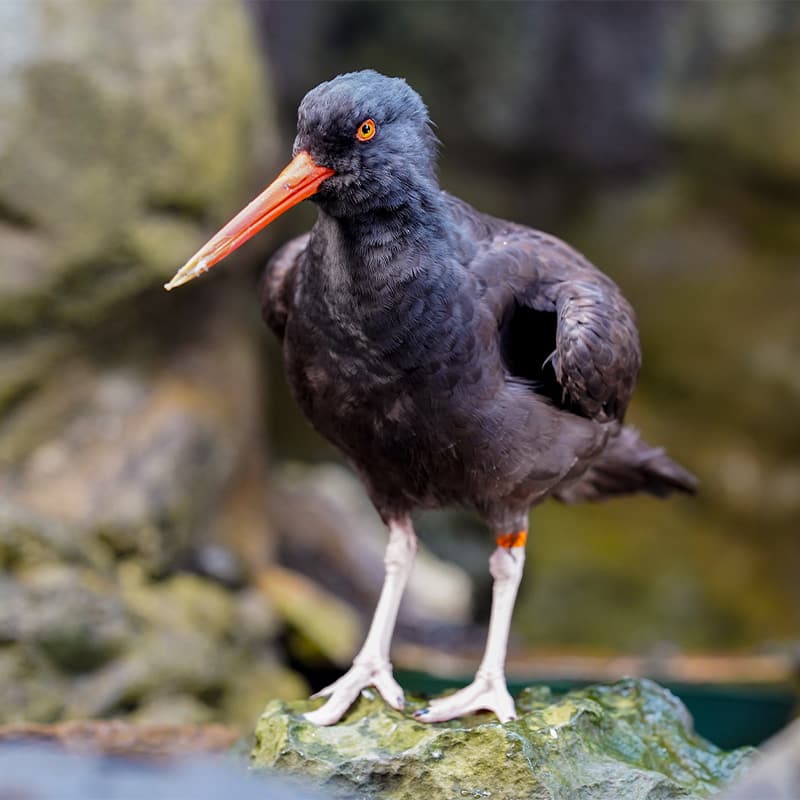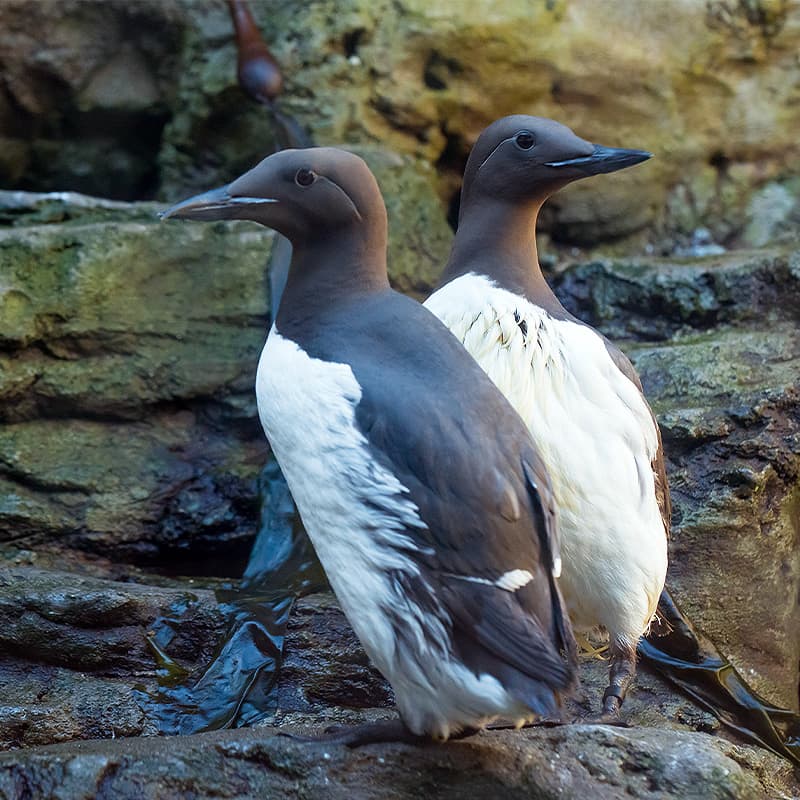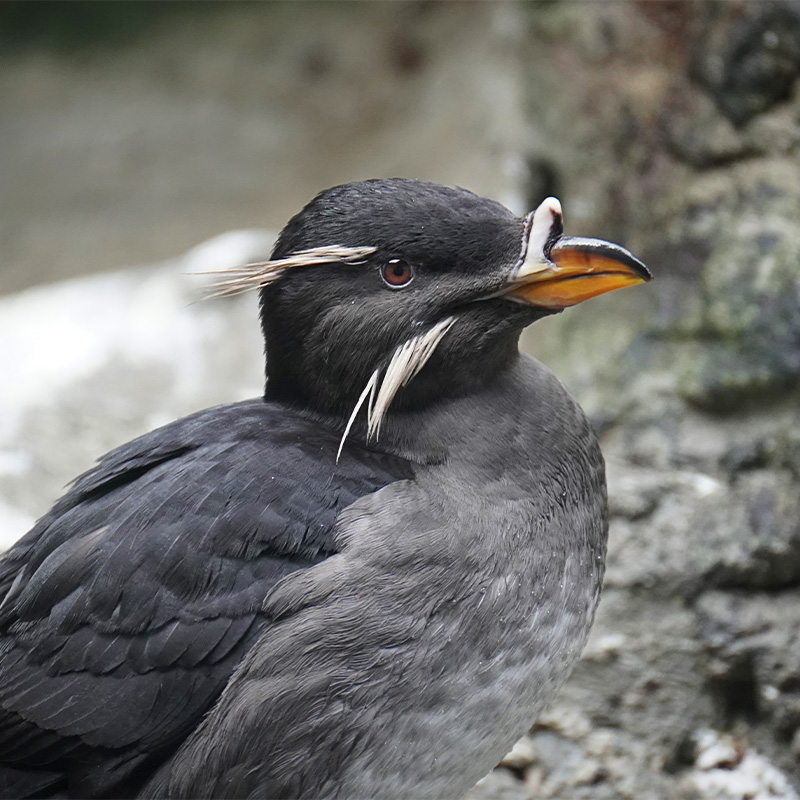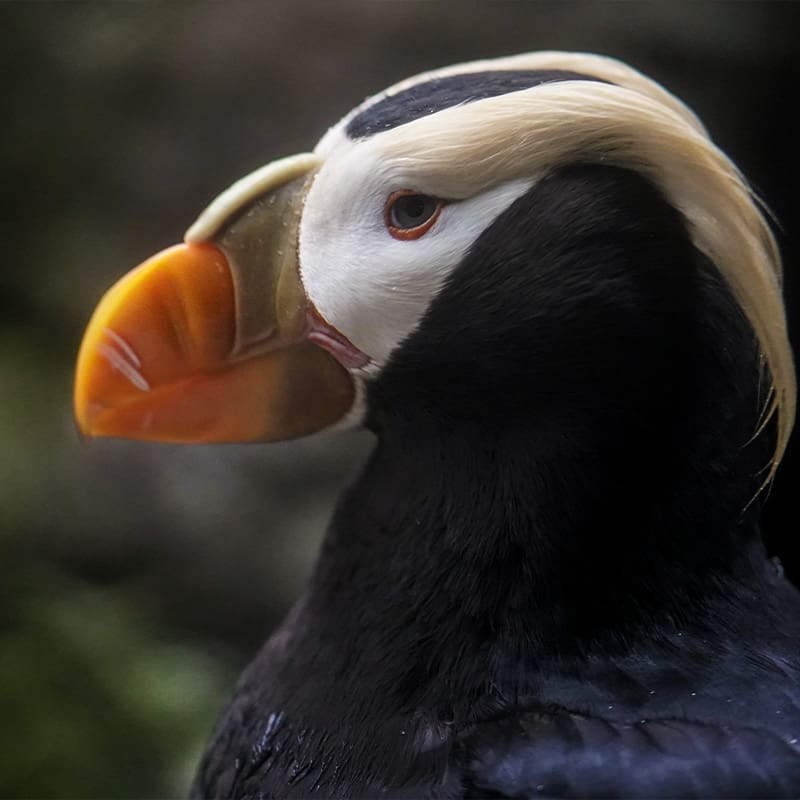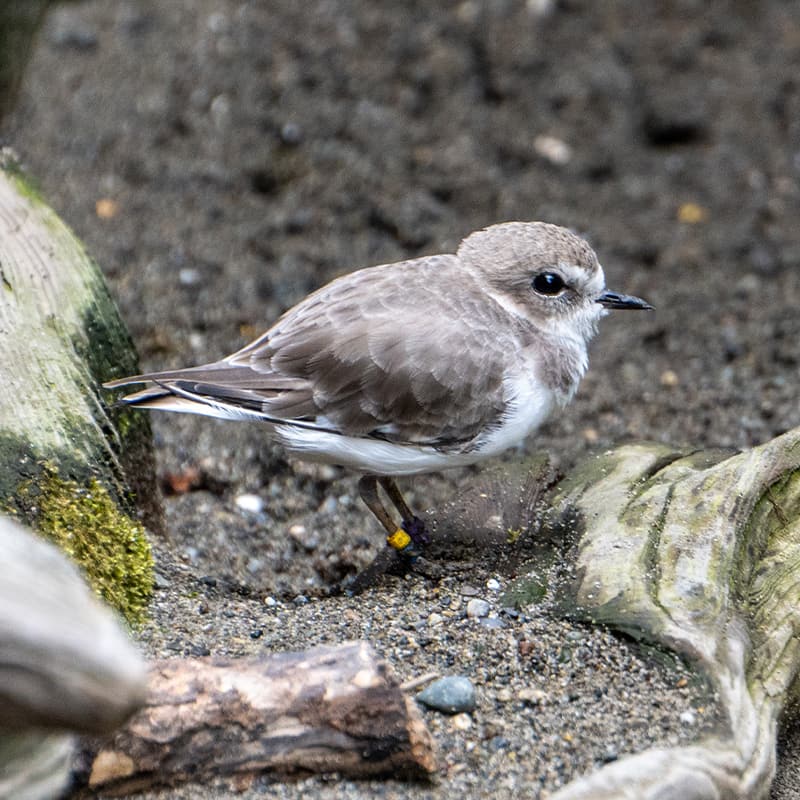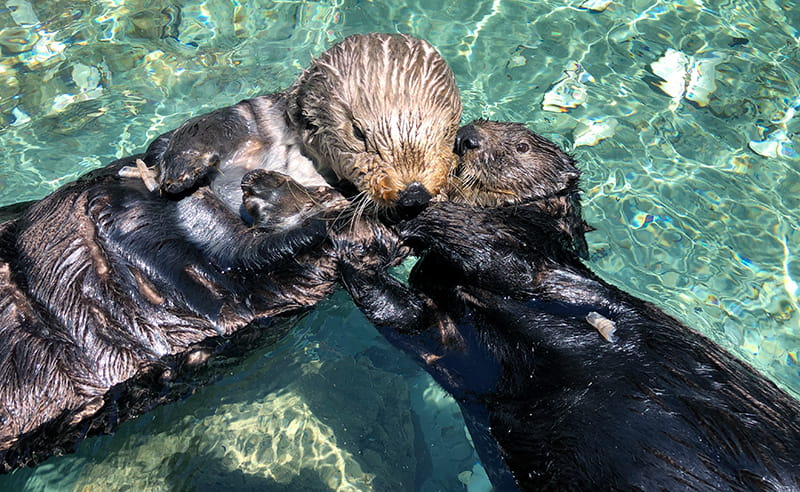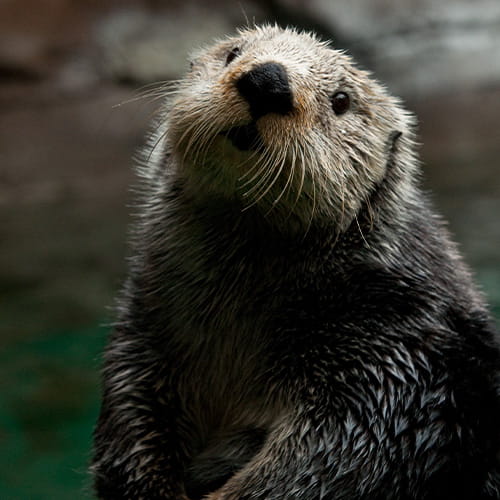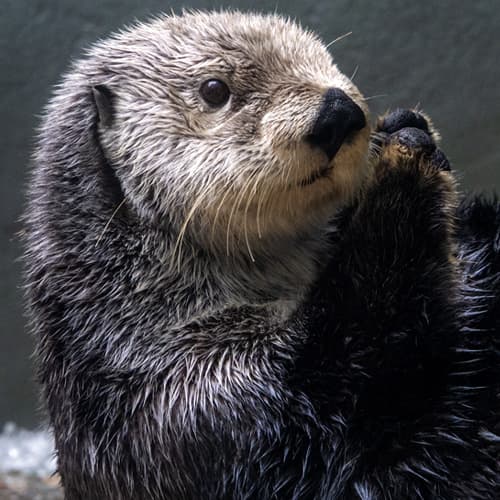- Birds
Long-billed curlew
Named for its bill—and its call
This bird’s common name comes from its notably long bill and distinctive call—“cur-lee.” The female long-billed curlew’s bill is slightly longer than the male’s, and shaped differently too: it’s flatter on top with a more pronounced curve at the tip.
At the Aquarium
- Bird habitats, Pier 60
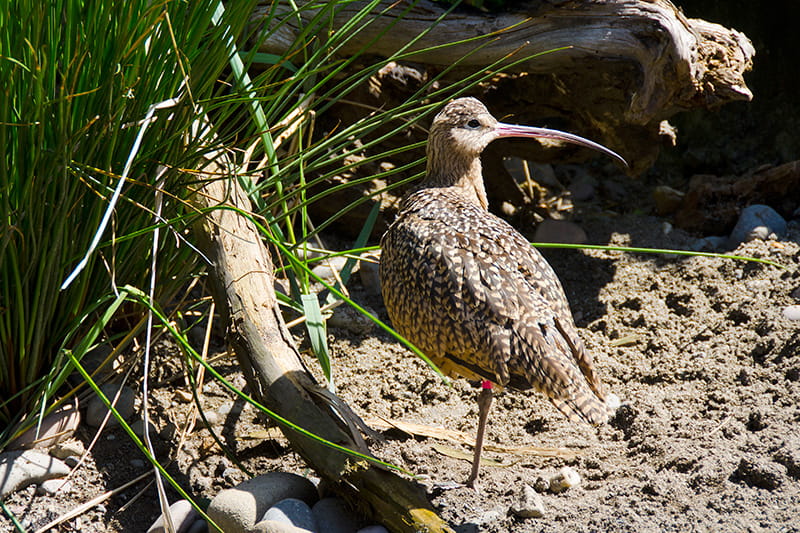
Let’s eat!
When long-billed curlews migrate south for the winter, they find their meals in coastal tidal mudflats, where their bills are perfect for searching in rocky crevices for bottom-dwelling marine crustaceans like shrimp or crabs. During the breeding season they travel northeast to grasslands and fields where they might peck at the ground, eating beetles or caterpillars; or probe using their bills to find burrowed earthworms and spiders.
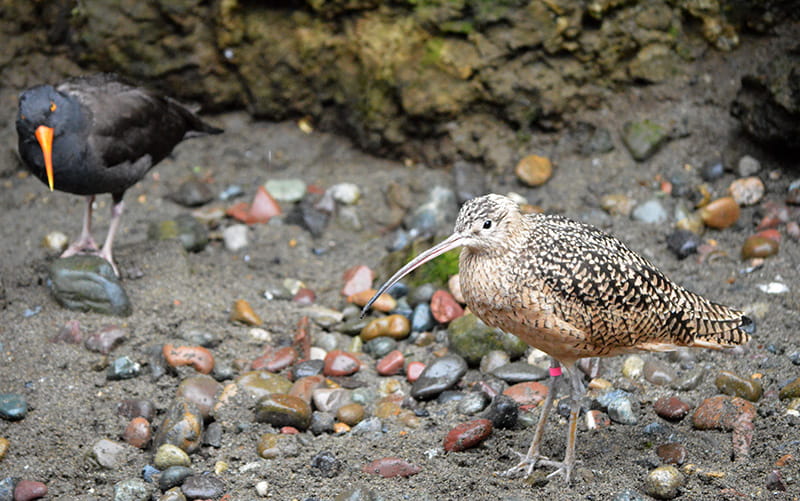
Cozy nests on the ground
Long-billed curlew nests are found on the ground, often located near dirt mounds and rocks, perhaps to provide some camouflage or a better vantage point for scouting danger. The male begins the nest-building process by scraping at the ground; it’s his way of signaling he’s looking for a mate. Once he’s joined by a female, the pair works together to create a deeper depression, then line their nest with pebbles, stems, grass and other material. After they’ve “dug in,” both parents become highly territorial as they protect their nest—and eventually, their eggs and chicks.
Keeping baby safe
The female long-billed curlew lays up to four eggs at one time, which incubate for about a month before hatching. The newborn chicks don’t yet have long bills and, although they’re capable of leaving the nest less than six hours after hatching, they’re not able to probe for food on their own. Instead, their parents lead them to denser grasslands where they can find insects (such as grasshoppers) above the ground. As the chicks forage and eat, the parents keep hawks and other predators away through aggressive displays, direct attacks and even by feigning a wing injury to distract predators away from their young. Females usually abandon the chicks two to three weeks after hatching and leave the care of the brood to the male.
Conservation
Long-billed curlews face threats to their habitats from urbanization, changing agricultural practices and climate change. Pesticides can decrease the insect populations the curlew survives on during the breeding season. When you take action to limit your energy consumption, you’re helping to curb climate change, which helps the long-billed curlew, too. Want to help even more? Think about joining a local conservation group that encourages protection of grassland habitat.
Quick facts
Their long, thin bills are perfect for finding crustaceans in rocky crevices.
Curlews build their nests on the ground.
This bird’s common name comes from its distinctive call—”cur-lee.”
